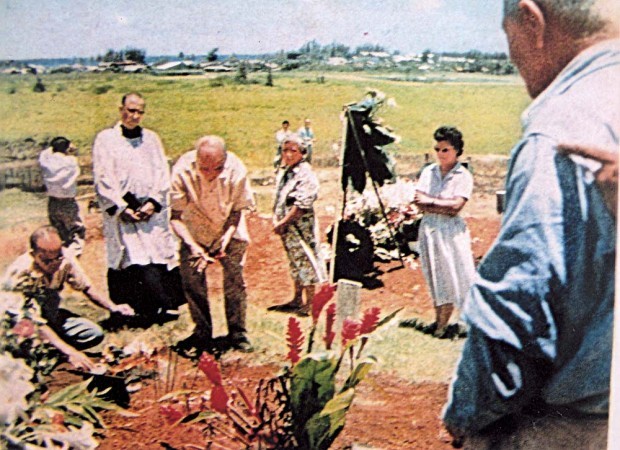KAPA‘A — Michael Ching of Hanalei will officiate the Ching Ming ceremonies at 11 a.m., Saturday at the Chinese Cemetery in Kapa‘a. The traditional ceremony, coinciding with the third day of the third month in the Chinese lunar calendar, marks
KAPA‘A — Michael Ching of Hanalei will officiate the Ching Ming ceremonies at 11 a.m., Saturday at the Chinese Cemetery in Kapa‘a.
The traditional ceremony, coinciding with the third day of the third month in the Chinese lunar calendar, marks the end of a month-long Ching Ming celebration where grave sites are tidied and families gather to worship their deceased relatives, said August Yee.
“Custom and tradition in worship of ancestors, especially family and relatives, has a history in China dating thousands of years,” Yee said. “The Chinese have great respect for and strongly revere their ancestors. During Ching Ming, a person honors the dead.”
Ching Ming is indicated with two characters: “ching,” meaning pure or clean, and “ming,” meaning brightness, states the Chinese Historical and Cultural Project website.
The Ching Ming observance may have had its beginnings as the original religion in China. Ancestor worship is the only native religion to China, the website states. All others, including Buddhism, Christianity, Judaism and Islam were imported from outside China.
Confucianism and Taoism originated in China but are philosophies rather than religion. In Confucianism, a form of ancestor worship is incorporated with the virtue of filial piety, the website states.
Yee said observing and celebrating Ching Ming represents five important personal qualities: benevolence, purity, prosperity, wisdom and truth. It is believed to bring blessings to the Chinese community and to those who dutifully pay their respects to ancestors buried in the cemetery.
During the ceremony, offerings will be placed at the cemetery altar including roast pig; poached or boiled chicken; five bowls of ceremonial dishes; various fruits; bowls of rice; and cups of tea and wine.
Additionally, red-colored candles and incense — along with paper of embossed gold and silver, symbolizing money — will be burned for the deceased to spend in the afterlife.
Yee said the public is invited to the ceremony to learn more about Ching Ming, which he equates to the observance of Memorial Day in America, the obon festivities by the Japanese and the traditions of el Dia de los Muertos by the Mexicans.
An abbreviated work day will take place from 9 to 11 a.m. where volunteers are requested to work cleaning up the grave sites and plots. Volunteers are also requested to bring hoes, shovels and rakes for the project.
Yee said the Kapa‘a Chinese Cemetery Project was started in May 2007, and following four years of work, about 1,200 haole koa trees were removed, more than 140 tombstones were re-erected, and a lot of grass has been planted to restore the cemetery where more than 250 people are in their final resting place.
The cemetery, depicted in an Aug. 10, 1959 issue of Time magazine celebrating Hawai‘i statehood, celebrated its centennial in 2008 when Ching hosted the first Ching Ming ceremony following the start of work to restore the cemetery.
The Park Fook Tong Society charted the cemetery, its members being Chinese who emigrated to Hawai‘i and settled in the Kapa‘a area before the turn of the century.


